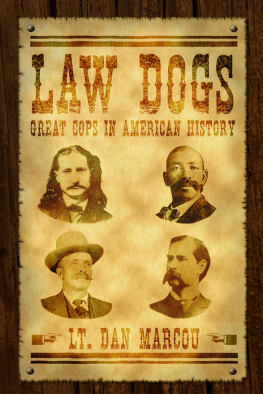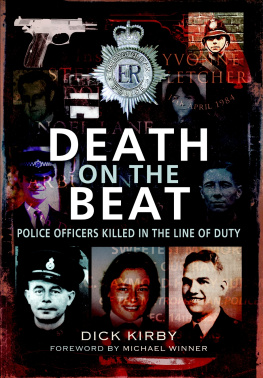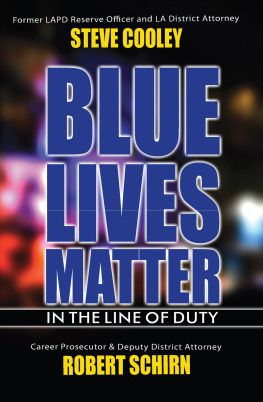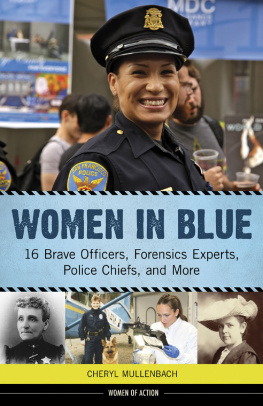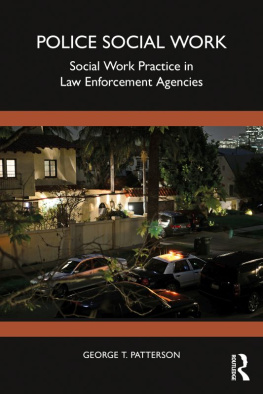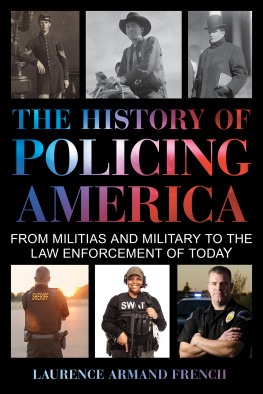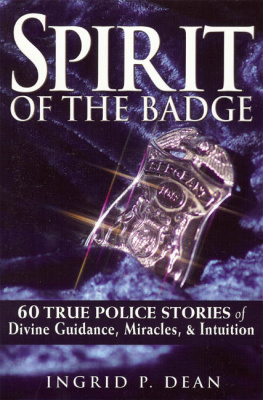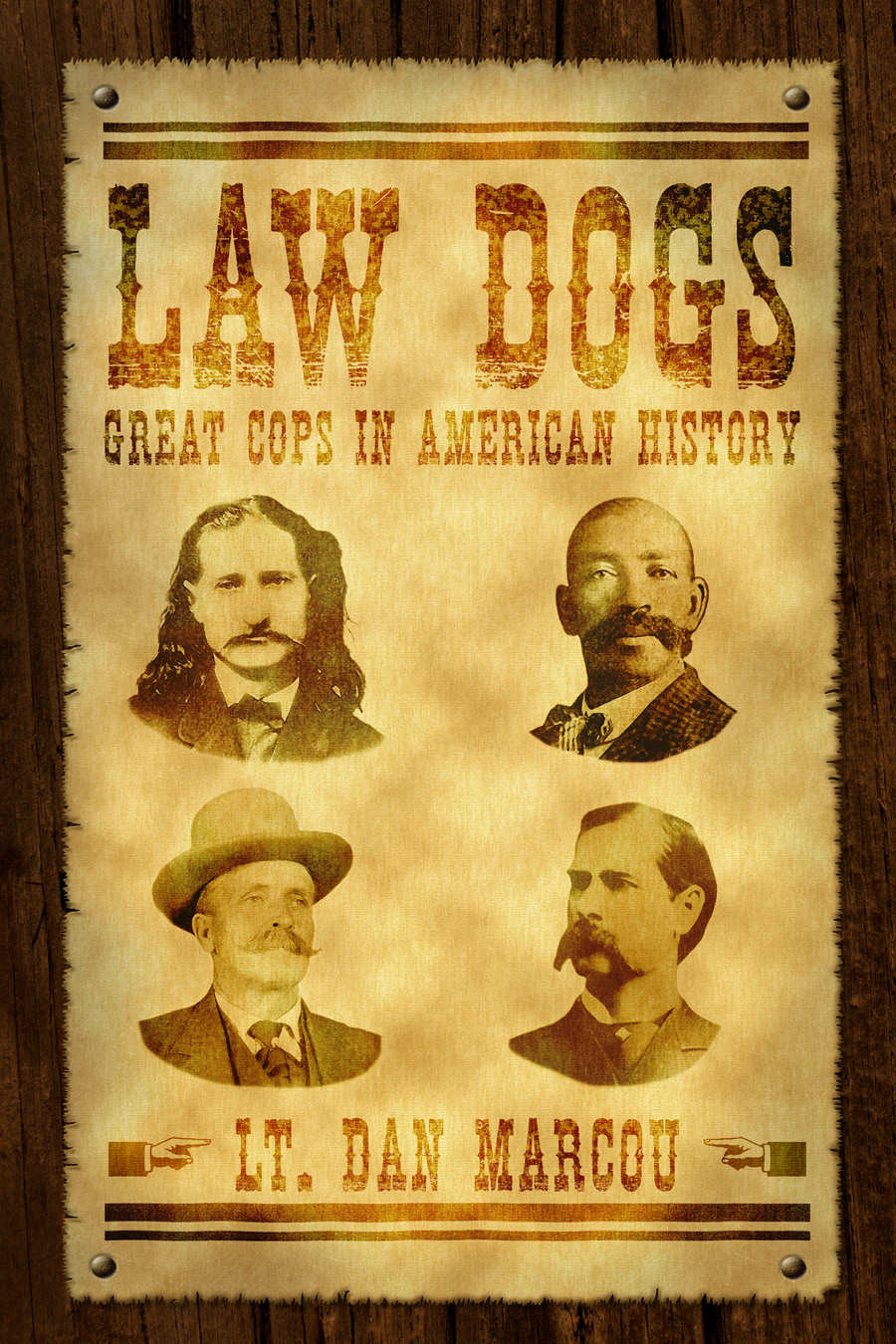
Law Dogs
Great Cops in American History
Lt. Dan Marcou

Law Dogs
2015 Lt. Daniel Marcou
All rights reserved.
No part of this book may be used or reproduced in any form without written permission from the publisher, except in the case of brief quotations embodied in critical reviews and articles.
Thunder Bay Press, Holt, MI 48842
www.thunderbaypressmi.com
First Printing, September 2015
20 19 18 17 16 15 1 2 3 4 5
Print ISBN: 978-1-933272-52-8
eBook ISBN: 978-1-62026-009-8
Library of Congress Control Number: 2015930377
Book and cover design by Julie Taylor.
Dedicated to the 100,000 men and women whose names are etched upon the wall of the Law Enforcement Memorial.
They wore their uniform with pride,
and in that uniform they died.
Table of Contents
Preface
I n the pages that follow you will find stories as true as possible considering some of these law officers lives have been lionized and their stories have been distorted to such a degree that it is difficult to know what is truth and what is fiction. I have tried to distinguish the difference and let readers know an imperfect, but credible, version of the truth.
One thing I noticed while researching this book was the dizzying variety of ways one persons name could be spelled in a lifetime. For example, Wild Bill Hickok was Jim Hickok, James Butler Hickok, Duckbill Hickok, Wild Bill Hickok, and even Haycock at varying times during his life.
This story contains individuals whose names were spelled differently throughout their lives due to personal preference, illiteracy, and even the misspelling of storytellers and newspapers. Sometimes individuals changed names deliberately to establish an alias, to start a new life, or to conceal the mistakes of an old life. Therefore, I have tried to arrive at the most common spelling of many of these early heroes and villains, realizing other spellings may exist.
In choosing which stories to relate, I needed to include those famed lawmen whose legacies have been told many times. Therefore, you will have the opportunity to read about Wild Bill Hickok and the Earps. Their stories continue to be interesting, but in reading them you will note that their accomplishments pale in comparison to the careers of less famous law officers such as Frank Hamer and Bill Tilghman.
Discover why the Texas Rangers are so proud of their heritage. The Texas Rangers have the distinction of being the only law enforcement agency in the country that has served not only in a law enforcement role but also in war as a crack military unit. In both arenas they excelled and have been universally feared and respected by their foes.
Decide for yourself whether Bass Reeves, a former slave, was the inspiration for the story of the Lone Ranger. It is speculation to conclude that he was, but it is an absolute fact that his real life makes a better story than the Lone Rangers fictional life. Reeves put over 3,000 of the most dangerous criminals behind bars. He was a legend in his own time.
Learn why the modern FBI was born in 1934 and discover what a truly painful birth it was. It was year filled with careening cars and chattering Tommy Guns. These early agents experienced great triumphs but also suffered nearly unbearable tragedies.
Each chapter is a stand-alone read about a particular officer or group of officers. Some earned their place in this book because of an outstanding career, others due to their decisiveness during one incredible moment.
Women did not break into law enforcement until recent history, so there are only two stories about women law officers told here, but oh what stories they are!
There are even some chapters about citizens who quite famously came to the aid of law enforcement.
Now, I would like to introduce you to some of my heroes
The Law Dogs!
Acknowledgments
I would like to acknowledge the assistance I received from Professor Art Burton, Marcus Young, Stacy Lim, John Dodson, the family of Brian Terry, Dan Brooks, Frank Pobjecky, Justin Garner, The Texas Ranger Museum, the La Crosse County Historical Society, the Kansas State Historical Society, and the Oklahoma State Historical Society.
I would also like to thank my editor, Julie Taylor, who quite simply makes me a better writer, and Doug Wyllie and the readers of policeone.com, who have encouraged me to continue writing by reading my sincere scribblings.
Part One: The Wild West
Chapter 1: John ' Jack ' Coffee Hays . Texas Ranger

J ohn Jack Coffee Hays was born on January 28, 1817, at Little Cedar Lick within Wilson County, Tennessee. He was the son of Elizabeth (Cage) Hays and Harmon Hays. Harmon Hays saw action serving with Andrew Jackson and Sam Houston while fighting the British during the War of 1812. Harmon named his son after his life-long friend, Colonel John Coffee.
In 1836 Jack, at the age of nineteen, traveled to Texas to join its fight for independence against Mexico. Jack carried a letter of recommendation from his uncle, President Andrew Jackson. Sam Houston, who knew Jacks father well, assigned him with a group of Texas Rangers under the command of Erastus Deaf Smith.
Jack was immediately immersed in the horrors of war when his unit was tasked with burying the dead of Goliad. These Texans, after being cut-off and out-numbered, attempted to avoid the fate of the Alamo defenders by offering up their surrender.
Hays heard the story their death as well as their commander, Colonel James Fannin. Colonel Fannin was wounded in battle and eventually surrendered himself and his men to the mercy of Santa Anna.
Santa Anna was incapable of such mercy. Fannin was made to stand by and bear witness as each man in his command was executed. Colonel Fannin was executed last. Due to the severity of his wounds, he was carried before the firing squad in a chair. His last requests were:
- To have a letter and his personal affects be sent to his wife.
- To be shot in the heart.
- To be given a Christian burial by his Christian enemies.
Instead, Fannin was shot in the face and his body was looted. With these indignities completed, his remains were ignominiously thrown onto the heap of his murdered soldiers, and all were set on fire. No words or blessing were said over their bodies.
This event convinced Jack Hays that the Republic he had traveled so far to help create would have something better to offer than the harsh brutality of Santa Annas dictatorship.
When Jacks command won a sharp skirmish against the Mexicans, he personally captured the Mexican Commander Juan Sanchez who had been at the Alamo and Goliad. Instead of exacting revenge against Sanchez for the merciless killings of surrendered soldiers, Sergeant Hays treated Sanchez with the dignity and respect of a prisoner of war.
John Coffee Hays Texas Ranger
After Texas earned its freedom by defeating Santa Anna at the battle of San Jacinto, John Jack Coffee Hays joined the Texas Rangers. He intended to help tame the lawless land they had just won so that others might be able to live in peace in this new country called The Republic of Texas.
As he formed his new nation, Sam Houston realized the Texas Rangers were an inexpensive and efficient way to protect the frontier of his blossoming new nation. He officially formed them in 1841, and Hays was appointed a Captain. Hays promptly began forming and training his company.
Next page
